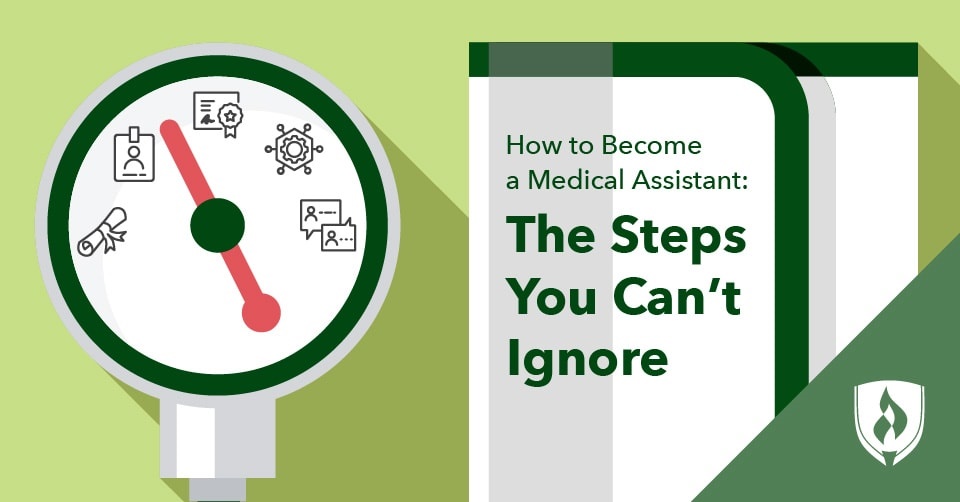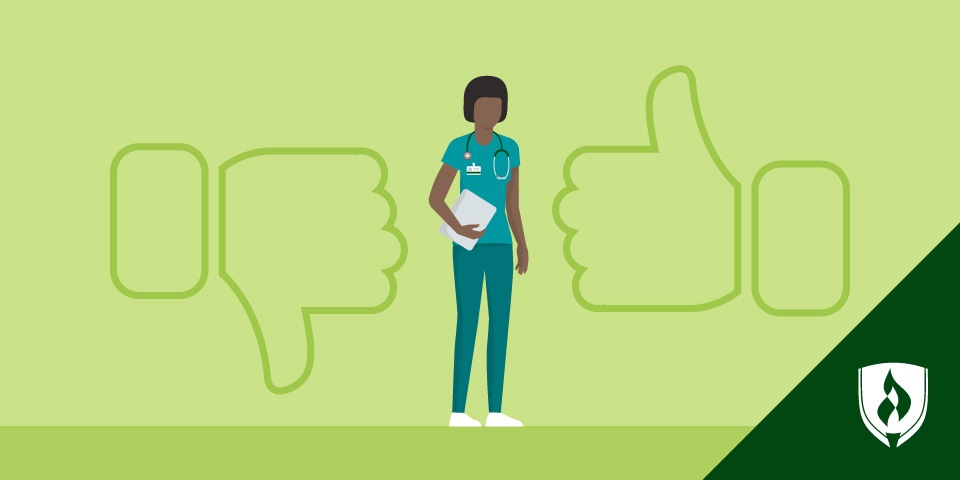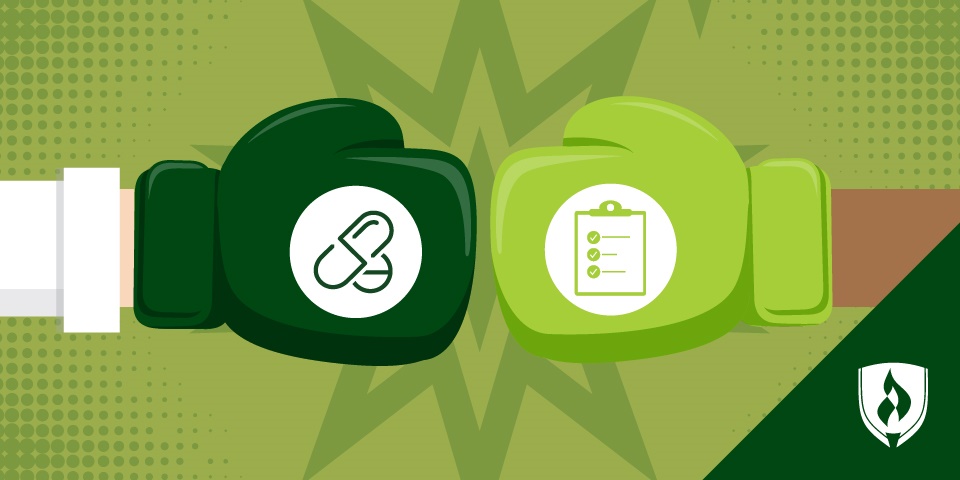
Helping others has always been part of who you are. Whether you’re the friend with bandages and ibuprofen at the ready or the one binging medical dramas during your downtime, it’s easy for others to see how you’d be able to apply your helpful nature to a career in the medical field.
If you’re looking for a relatively quick path into the healthcare field, becoming a medical assistant (MA) is an excellent option. As a medical assistant, you’ll provide direct patient care—work like performing routine diagnostic procedures, recording vital signs and administering medications and first aid.
If this sounds interesting to you, read on to find out why becoming a medical assistant is a great career option and the practical steps you’ll need to take to get there.
Why become a medical assistant?
You’re interested in a job in the medical field, but why choose medical assisting? Two big reasons: The job opportunity and the straight-forward path to becoming one.
According to the Bureau of Labor Statistics (BLS), employment of medical assistants is projected to grow by 16 percent from 2021 through 2031, a rate much faster than the national average for all occupations.1 Physicians look to have a lot on their plates in the upcoming years as the baby boomer generation ages into the peak of their medical needs, and support staff like medical assistants can help lessen the load as they take on more of the routine clinical and administrative work.
Matched with the great opportunity is the straightforward training and education path into medical assisting. We’ll detail this more below, but medical assistant programs can be completed relatively quickly, and the Rasmussen University Medical Assisting Diploma program can be finished in as few as 12 months.2 That means your dream of working in healthcare is truly achievable and not some distant fantasy. Sounds great, right? Let’s get to some basic steps for how to make your medical assistant career happen!
5 steps to becoming a medical assistant
The path to becoming a medical assistant breaks down into five basic steps. They are:
- Complete a medical assisting program
- Build experience with internships
- Get certified
- Organize your newly developed skills for your resume
- Apply and interview for jobs
Read on to see what each of these steps involves and how to best make them happen!
1. Complete a medical assisting program
While it’s true some may be able to find a medical assistant position straight out of high school, the BLS reports most medical assistants have completed postsecondary training programs.1 Additionally, many employers prefer to hire certified medical assistants (CMAs) or registered medical assistants (RMAs). Both credentials require candidates to complete a diploma or certificate program.
When choosing a medical assisting program, be sure to consider factors like alumni outcomes, program accreditation, how courses are delivered (online versus in-person), commute time, program costs and the hands-on training you’ll receive.
Some of these factors may play a big role in your decision-making. For example, while online courses may be more convenient, you’ll also want to be sure that you get a mix of important hands-on experience, as direct patient care work requires practice.
The Rasmussen University Medical Assisting Diploma program combines both residential and online courses. In the on-campus courses, students get vital hands-on experience by learning various patient care techniques like patient triage strategies and how to assist with various procedures. This hands-on experience helps future medical assistants carry themselves professionally and confidently step into their new roles on day one.
1. Build medical assisting experience with internships
In addition to coursework and labs in your medical assisting program, you’ll also want to complete an internship or externship toward the end of your program. During this time, you’ll get the opportunity to practice the skills you’ve been developing in the classroom at a clinic, specialty practice or hospital. Students shadow experienced medical assistants and often take on tasks like drawing blood from patients under supervision.
Not only will this experience give you many highlights to include on your resume, but you’ll also feel empowered walking into job interviews after graduation.
2. Get certified
As we mentioned before, depending on employer preferences and the state you want to work in, you may need to pass a certification exam. Two primary certification options are the Certified Medical Assistant CMA (AAMA)® exam and the Registered Medical Assistant (RMA) exam. Both will cover a variety of crucial topics like anatomy and physiology, medical terminology, safety and legal compliance. Sound intimidating? Don’t sweat it too much—a quality medical assistant program will provide you with everything you need.
If employers in your area don’t require certification, remember that pursuing one of these options is still an excellent way to help boost your resume and stand out as a candidate when applying.
3. Take stock of your skills
After you complete a medical assisting program, you’ll have a whole new arsenal of skills in your tool belt. In terms of technical skills, you should have a strong grasp on:
- Medical terminology
- Patient etiquette
- How to use electronic health records (EHR)
- How to perform healthcare administrative tasks
These are skills you certainly want to list on your resume, but don’t forget about soft skills as well. Also known as transferable skills, these are abilities you likely possessed before but have developed as part of your time in school. As a medical assistant, you’ll use soft skills like:
- Empathy: Health problems can be scary, and a little empathy can help your patient feel much more comfortable.
- Multi-tasking: Medical assistants are expected to complete a number of varied duties within a short time frame. Being able to keep your mind and body moving can help you check items off the list easily.
- Communication skills: Medical assistants work on a team of healthcare providers in an environment where strong communication is critical for patient safety and the efficient operation of a facility.
Examples and stories of how you’ve used your soft skills to benefit others will come in handy when applying and interviewing for medical assisting jobs. When you think of examples during your medical assisting schooling, don’t forget to write them down to refer to later.
4. Apply and interview
Here’s where it all becomes real! No matter what sort of training you have, it’s to your benefit to reach out, take initiative and pursue the type of career you want. If you’re willing to move, that could affect the steps you need to take to become an MA as well, including certification.
Keep combing through your resume, rehearsing your responses for interviews and polishing your technical skills. If your job search is taking longer than you’d like, consider volunteering at a local hospital or clinic to add more healthcare experience to your resume.
It also doesn’t hurt to apply to a wide variety of places—clinics, specialty centers and hospitals. Even if you were set on one particular workplace before, be open to the possibilities. When you go in for your interview, you may find that you enjoy the environment more than you originally thought.
Keep in mind that if you have a degree or a diploma, your school may be able to help connect you with alumni in the area who may know of opportunities or can get you an interview with the right person. Also, if you had a positive experience at your medical assisting externship, be sure to ask the staff if they know of any opportunities either at their workplace or in their network. You never know where a connection might lead!
What to do after you’ve become a medical assistant
Landing your first job as a medical assistant is a big step in your healthcare career—but that doesn’t mean your work is necessarily done.
Receive on-the-job training and settle in
Once you snag your first medical assisting job, you’ll be excited to dive in and get going. But don’t be surprised if you’re not flying solo week one. Many clinics and hospitals have their own procedures and organization systems they’ll want to train you on.
If you haven’t completed a medical assisting program, it’s likely that your on-the-job training will be even more extensive. Physicians or other medical assistants will need to teach you medical terminology, the names of the instruments, how to interact with patients professionally and how to perform tasks like drawing blood, performing common procedures and using EHR software. All this training can take several months depending on the workplace and its specialty, but it is vital to your success as a medical assistant.
Consider your long-term career path
For some, medical assisting is a perfect long-term role, but others may be looking for opportunities to expand their scope of work or find other areas within healthcare to branch out into. If you’re looking for additional areas to pursue down the line, the good news is that working as a medical assistant gives you valuable experience and insight into the inner workings of a healthcare facility. This can make the transition to learning the ropes in a new role easier. Some common healthcare careers medical assistants may want to consider include:
- Licensed practical nursing or registered nursing
- Pharmacy technician
- Medical laboratory technician
- Health information technician
Ready to become a medical assistant?
The more you can set yourself apart from other potential candidates, the better. Taking the time to gain experience, training and skills will only benefit you in the end.
Channel that desire to help others and get started on working toward your career in healthcare! There’s no doubt that there will be work involved, but with the right amount of passion and perseverance, you’ll be working with patients before you know it.
Related Articles:
- 9 Notable Reasons to Become a Medical Assistant Now
- What to Expect from a Medical Assistant Career: An Inside Look
1Bureau of Labor Statistics, U.S. Department of Labor, Occupational Outlook Handbook, [accessed June 2022], www.bls.gov/ooh/. Information represents national, averaged data for the occupations listed and includes workers at all levels of education and experience. Employment conditions in your area may vary.
2Completion time is dependent on transfer credits accepted and the number of courses completed each term.
The Medical Assisting Diploma program at the Aurora/Naperville (with an ABHES approved separate education center in Mokena/Tinley Park), Rockford, and Romeoville/Joliet campuses in Illinois; the Fort Myers, Ocala, Central Pasco, and Tampa/Brandon campuses in Florida; the Green Bay campus in Wisconsin; and the Bloomington, Eagan, Hennepin/Anoka, Mankato, and St. Cloud campuses in Minnesota are accredited by the Accrediting Bureau of Health Education School (ABHES). 6116 Executive Blvd., Suite 730, North Bethesda, MD 20852, 301-291-7550.
Certified Medical Assistant is a registered trademark of American Association of Medical Assistants, Inc.
EDITOR’S NOTE: This article was originally published in 2016. It has since been updated to include information relevant to 2022.




